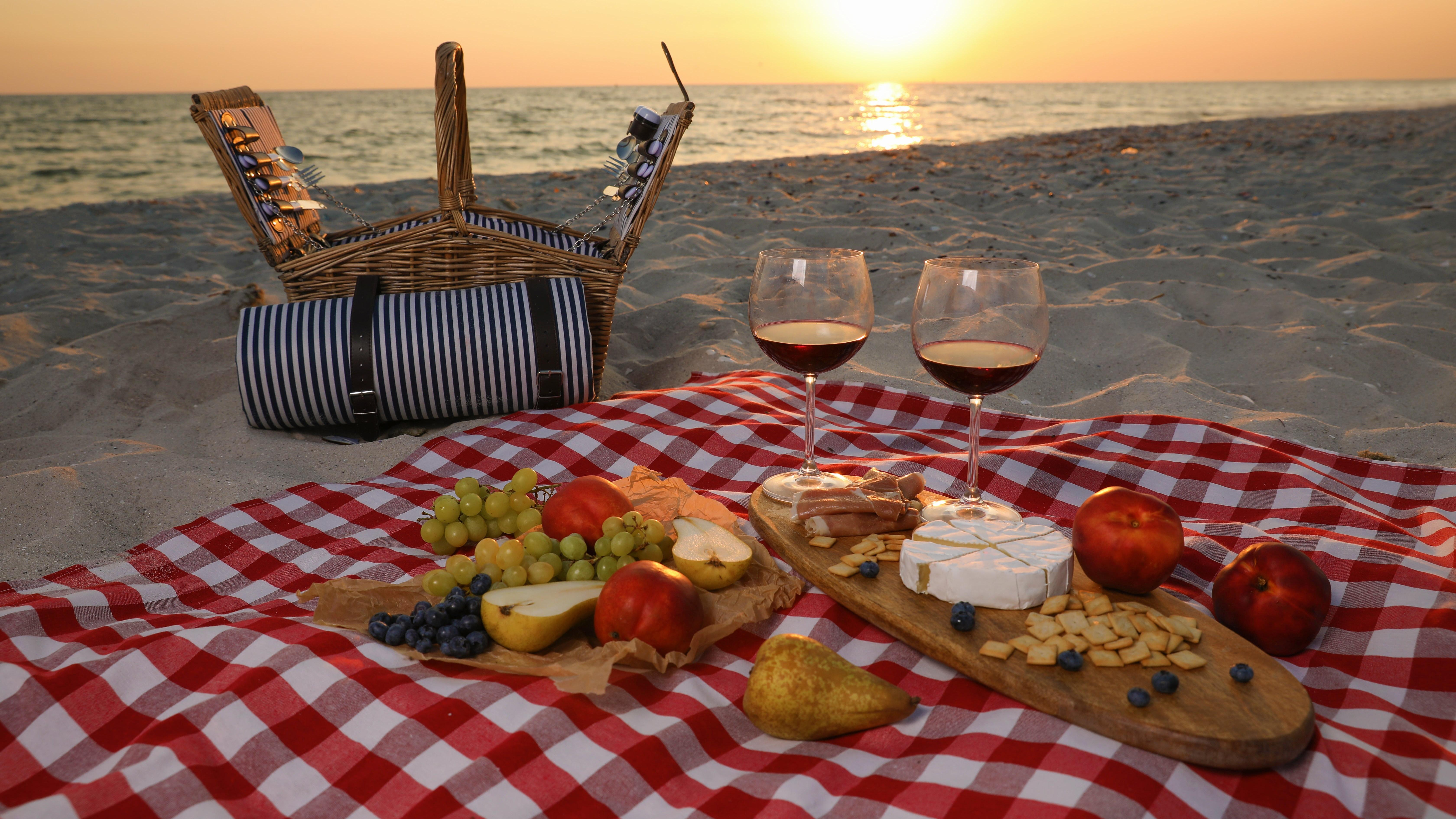The 3 Things Standing Between You And A Perfect Beach Picnic
Make the most of those summer meals right on the water.
As Nicki Minaj once said, "Let's go to the beach!" Now that summer weather is upon us we all want to spend as much time by the water as possible, and an all-day beach excursion must include food and drink. But no matter how glamorous certain reality stars make it seem to picnic in the sand (with small children, no less!), there are obstacles that everyday beach diners need to navigate.
To prepare for my next lakeside meal, I reached out to Allyson Ragones, the founder of Tampa-based company The Curated Picnic Co., for some tips for making the most of those beach days.
The three biggest obstacles to beach dining
"Having the right equipment and coming fully prepared for all the elements in play is how you master a successful beach picnic," Ragones says. "When setting up on the beach, it's important to remember the elements associated: wind, sand, and birds."
When preparing your meal and general setup, zeroing in on each of these elements individually can be useful. But remember, when you're out in the thick of it trying to enjoy your rosé and finger sandwiches, everything is coming at you at once. The wind, no matter how light, is pretty constant; the birds will be relentless; and the sand, well, that stuff is everywhere. Don't trick yourself into thinking you'll be able to flat-out avoid one or the other.
The best foods to bring to the beach
When it comes to the kinds of food and drink you want to bring, Ragones says the sky's the limit. "We've had customers bring a full steak and lobster dinner to their beach picnic," she says. "The trick is how you package your items and how secure you have them while on the beach."
A parasol or two, strategically placed, can also create a shield from the main elements, not to mention add a decorative, Instagrammable element to your picnic. Bring multiple coolers to stow your food while you're on the beach, and wrap items in parchment paper and place in airtight containers before heading out—the less ways for sand to get into your meal, the better.
Also consider preparing your food in a way that lets you easily access it with a utensil because, as Ragones says, "Sandy hands = sandy food." For example, yes, you can have that lobster, but take the shell off and cut up that meat into more manageable pieces before packing it up for a romantic seaside dinner. Bring along a jug of water, just in case, to rinse sand off your hands as you go.
How to make the most of a beach picnic
Once you're at the beach, it's all about diligence. Keeping food covered and contained as much as possible is the best bet for preserving the quality of your meal.
"Just like sharks, seagulls smell blood—I mean food," Ragones says. "Even if it's wrapped and sealed it is still a target for these beachside birds. We recommend keeping your food hidden away in a cooler and only taken out when ready to consume. And consuming quickly is the trick."
Not only will this protect from birds, but from other outdoor critters, the wind (and anything the wind might blow your way), and sea spray from waves that get a little too close. Make sure to keep your packaging as hefty as possible so that it doesn't blow away and isn't easily scooped up by circling seagulls—plastic wrap, for instance, can be a hazard to beach creatures.
As much as you're hoping to protect your food, don't forget to also protect the environment you're dining in. You'll want to keep that beach clean and safe for many more waterfront meals to come.
